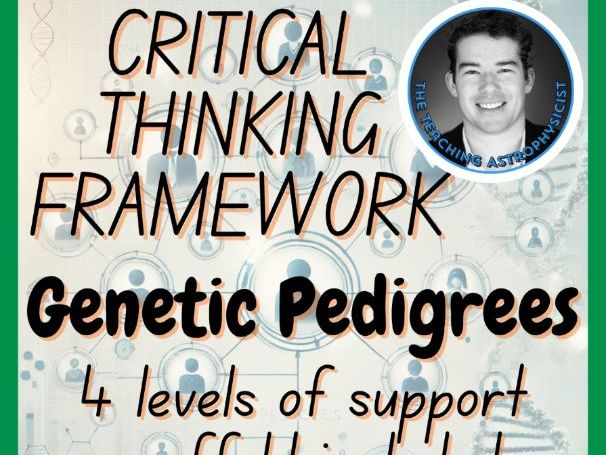

Learning through a critical thinking framework on the topic of genetic pedigrees allows middle and high school students to see the direct connection between fundamental science concepts and organizational processes. By encouraging them to formulate questions, examine data, challenge assumptions, and propose solutions, this approach deepens their understanding of biology while also sharpening essential 21st-century skills. Students become more engaged when they see how genetic knowledge, biology concepts and medical tools all intersect in a genetic pedigrees chart. Moreover, this framework empowers them to take on the role of problem-solvers and decision-makers, fostering intellectual curiosity and confidence as they learn how to systematically investigate and evaluate complex issues. After all, we can not and should not leave all the thinking to the chatbots! With this in mind, let’s engage with this excellent learning and teaching resource.
Learning about genetic pedigrees through a critical thinking framework helps middle and high school students develop analytical reasoning skills while exploring real-world biological concepts. By examining the patterns of inherited traits across generations, students practice identifying cause-and-effect relationships, drawing evidence-based conclusions, and formulating hypotheses about how specific genes are passed down. This process encourages them to question assumptions, interpret data methodically, and evaluate different genetic scenarios in a structured way.
In addition, using a critical thinking framework empowers learners to make meaningful connections between genetics and everyday life. As they construct and analyze pedigrees, they see firsthand how scientific evidence supports or contradicts family-based hypotheses, linking their classroom study of heredity to personal experiences. This approach nurtures a deeper understanding of genetics and fosters vital problem-solving abilities - both essential for future studies and for informed decision-making in adulthood.
THIS GENETIC PEDIGREES CRITICAL THINKING FRAMEWORK CAN BE USED SO MANY WAYS:
- Guided Inquiry Projects: Assign each step as a stage in a research project, from forming a question to reflecting on findings.
- Group Discussions: Facilitate structured group dialogues where each student is the primary driver to one step of the framework.
- Problem-Solving Stations: Set up stations, each focusing on a different step (e.g., analyzing reasoning, identifying limitations), and rotate groups through them.
- Reflection Journals: Encourage students to write short entries on each step after exploring new content or completing a project.
- Peer Teaching: Have students create mini-lessons using the steps, culminating in an elevator pitch or summary to teach classmates.
- Assessment Tool: Use the framework’s steps as a rubric to evaluate the depth and clarity of students’ scientific reasoning and presentations.
Something went wrong, please try again later.
This resource hasn't been reviewed yet
To ensure quality for our reviews, only customers who have purchased this resource can review it
to let us know if it violates our terms and conditions.
Our customer service team will review your report and will be in touch.